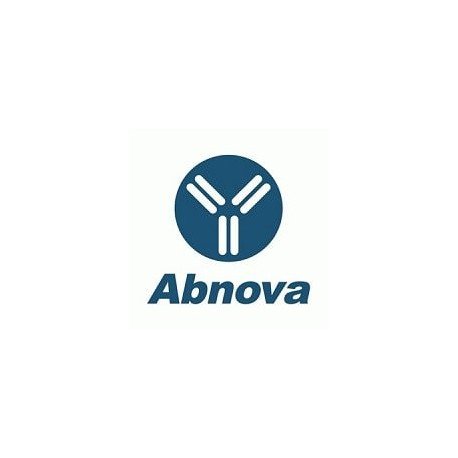Cart 0 Product Products (empty)
No products
To be determined Shipping
0,00 € Total
Prices are tax excluded
Product successfully added to your shopping cart
Quantity
Total
There are 0 items in your cart. There is 1 item in your cart.
Total products (tax excl.)
Total shipping (tax excl.) To be determined
Total (tax excl.)
Data sheet of MAP2K1 (phospho T386) polyclonal antibody
| Brand | Abnova |
| Product type | Primary antibodies |
| Reactivity | Bovine,Chicken,Clawed frog,Dog,Human,Mouse,Primates,Rat |
| Host species | Rabbit |
| Applications | WB-Ce |
More info about MAP2K1 (phospho T386) polyclonal antibody
| Brand: | Abnova |
| Reference: | PAB9609 |
| Product name: | MAP2K1 (phospho T386) polyclonal antibody |
| Product description: | Rabbit polyclonal antibody raised against synthetic phosphopeptide of MAP2K1. |
| Gene id: | 5604 |
| Gene name: | MAP2K1 |
| Gene alias: | MAPKK1|MEK1|MKK1|PRKMK1 |
| Gene description: | mitogen-activated protein kinase kinase 1 |
| Immunogen: | Synthetic phosphopeptide corresponding to residues surrounding T386 of human MAP2K1. |
| Protein accession: | Q02750 |
| Form: | Liquid |
| Recommend dilutions: | Western Blot (1:1000) The optimal working dilution should be determined by the end user. |
| Storage buffer: | In 10 mM HEPES, 150 mM NaCl, pH 7.5 (50% glycerol, 10% BSA) |
| Storage instruction: | Store at -20°C. Aliquot to avoid repeated freezing and thawing. |
| Quality control testing: | Antibody Reactive Against Synthetic Peptide. |
| Product type: | Primary antibodies |
| Host species: | Rabbit |
| Antigen species / target species: | Human |
| Reactivity: | Bovine,Chicken,Clawed frog,Dog,Human,Mouse,Primates,Rat |
| Application image: |  |
| Application image note: | Western blot of human T-47D cells showing specific immunolabeling of the ~45k MAP2K1 (Control). The phosphospecificity of this labeling is shown in the second lane (lambda phosphatase: lambda Ptase) The blot is identical to the control except that it was incubated in lambda Ptase (1200 units for 30 min) before being exposed to the MAP2K1 (phospho T386) polyclonal antibody (Cat # PAB9609). The immunolabeling of MAP2K1 is completely eliminated by lambda Ptase. |
| Applications: | WB-Ce |
| Shipping condition: | Dry Ice |
| Publications: | Mitogen-activated protein (MAP) kinase phosphorylation of MAP kinase kinase: determination of phosphorylation sites by mass spectrometry and site-directed mutagenesis.Mansour SJ, Resing KA, Candi JM, Hermann AS, Gloor JW, Herskind KR, Wartmann M, Davis RJ, Ahn NG. J Biochem. 1994 Aug;116(2):304-14. |


